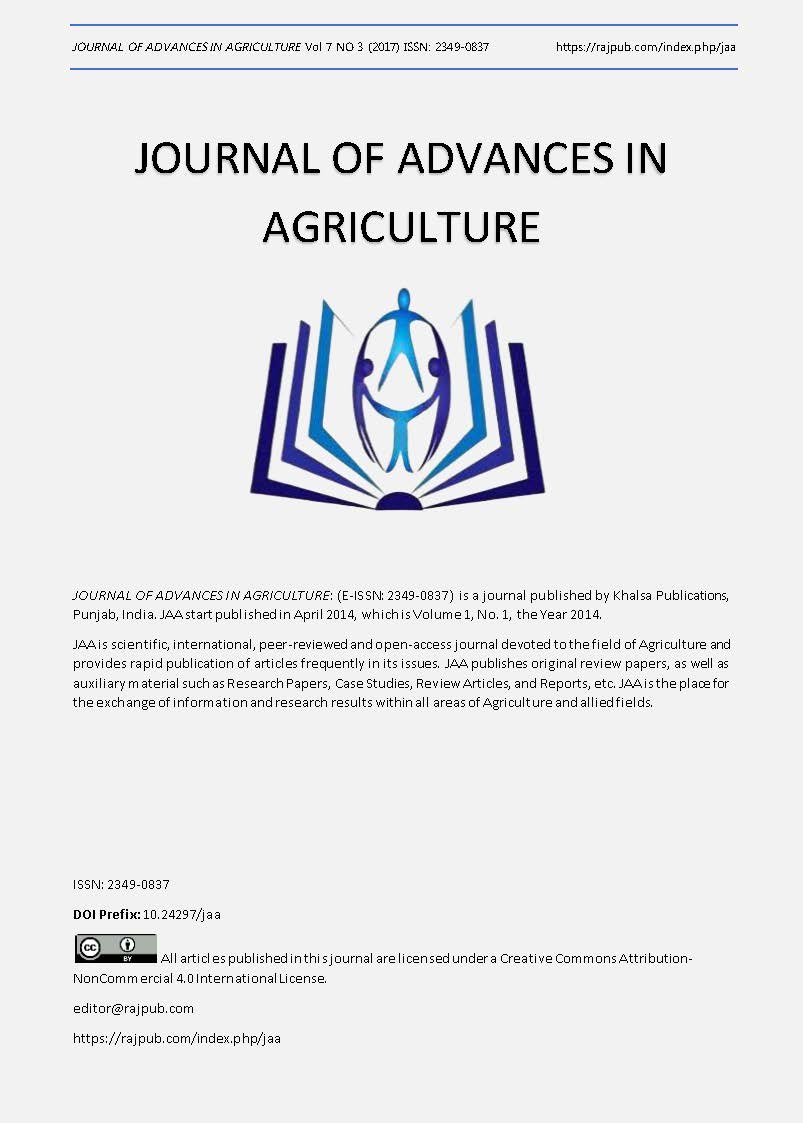STUDY OF TIMBER MARKET OF MALAYSIA AND ITS IMPACT ON THE ECONOMY AND EMPLOYMENT
DOI:
https://doi.org/10.24297/jaa.v7i3.6314Keywords:
Global wood markets, Forest plantations, Forest production management, ForecastsAbstract
This article presents the state of the global wood markets, which shows the evolution of forest resources and margins on the timber market over time. The underlying case has been discussed and discussed. Alternative scenarios are presented that allow one to consider some important questions about the behavior of the wood market and the future supply of industrial wood. (1) What happens along the northern and tropical margin? (2) What is the role of wood plantations? and (3) How should management change in the Malaysian market change? The baseline situation suggests that both prices and crop communities are growing in 150 years, with the largest harvest coming from existing and emerging plantations. Future harvest returns will result mainly from intensified management, through additional plantation and higher levels of management in selected forests rather than higher yields in inaccessible forests. Prices and harvest are most sensitive to alternative needs (paper, firewood) and scenarios for creating new plantations and less vulnerable to the costs of access to remote forests.
Downloads
References
2. UNECE, 2016, Forest Products Annual Market Review 2015-2016, Food and Agriculture Organization, https://www.unece.org/fileadmin/DAM/timber/publications/fpamr2016.pdf
3. UNECE, 2017, ECE/TIM/2016/2, Economic and Social Council, 5 January 2017, https://www.unece.org/fileadmin/DAM/timber/meetings/20161018/E/ECE_TIM_2016_2_Report_final_5.01.2017.pdf
4. Norchahaya, 2012, Sustainability of Resources for Wood based Industry, MTIB, http://www.perdana.org.my/ceoforum/wp-content/uploads/2012/09/Norchahaya-Hashim.pdf
5. Department of Statistics, 2010. Annual rubber statistics. Official portal of Malaysia, www.statistics.gov.my/portal/download_Agriculture/files/ GETAH/2010/GETAH_ANNUAL2010.pdf
6. Rajoo M., 2002, The Malaysian timber industry - current status, trends and opportunities, 11th Malaysian Business Forum, 25-26 November 2002, Kuala Lumpur, Malaysia.
7. Weng-Chuen Woon, Haron Norini (2002), Trends in Malaysian Forest Policy Forest Research Institute Malaysia, Policy Trend Report 2002; pp. 12-28
8. Islam R., Siwar C., 2010, Trade and Environment in the forestry sector: towards sustainable forest Management, Asian Journal of Scientific Research, 3(1), pp 1-17.
9. Ooi Tee Ching 2016, Malaysia's timber exports likely to hold up at RM22b, New Strait Times.
10. Ratnasingam J., Ramasamy G., Ioras F., Kaner J., Wenming L., 2012, Production Potential of Rubberwood in Malaysia: Its Economic Challenges, Not Bot Horti Agrobo, 40(2), 317-322
11. Ratnasingam J., Jones M.L., 2011, Recovery Problems in Rubberwood Plantations. IFRG Report 14, Kuala Lumpur, 47 pp.
12. Sulaiman N. 2017, An Analysis of Manpower Requirements of the Manufacturing Sector in Malaysia, EconWorld2017, 25-27 January, 2017; Rome, Italy
13. Thepaksorn, Vivien Fe Fadrilan-Camacho F., Siriwong W., 2017, Respiratory symptoms and ventilatory function defects among Para rubber wood sawmill workers in the south of Thailand. Human and Ecological Risk Assessment: An International Journal 23(4), 788-797.
14. European Commission, 2016, Supply Chain Mapping of Malaysian Timber and Wood based Industries.
15. Marigold Norman, 2016, Malaysia’s timber trade trends, http://www.forest-trends.org/documents/files/doc_5442.pdf
16. Impact of market forces and government policies on the tropical timber trade, https://www.atibt.org/wp-content/uploads/2017/05/3.1-Ed-Pepke.pdf
17. Merous, N.H., 2011. Forecasting Availability and Consumption of Rubberwood in Peninsular Malaysia.
18. Timothy Hromatka, 2005, Timber Shortage and the Sustainability of the Malaysian Furniture Industry
19. RHB, 2005, Initiation Of Coverage, Malaysia RHB Research, KDN PP 7767/9/2005, http://evergreengroup.com.my/data/568/uploads/1file__06810170605.pdf
20. Nimal Ruwanpathirana, 2011, Timber Utilization in Sri Lanka, State Timber Corporation, http://www.timber.lk/timberindustry/publish/Timber%20Utilization%20in%20Sri%20Lank%20-presentation.pdf
21. Srivaro S., Wongprot T., Matan N., Kyokong B., 2008, Accelerated conventional temperature drying of 30mm thick rubberwood lumber, Songklanakarin J. Sci. Technol. 30 (4), 475-483.
22. Woodspec, 2014, A Guide to Designing, Detailing and Specifying Timber in Ireland http://www.woodspec.ie/media/woodspec/content/Woodspec%20Final%20%20Section%20E.pdf
23. WWF, 2007, Failing the Forests Europe’s illegal timber trade, World wildlife foundation, http://www.wwf.se/source.php/1120070/FailingForests.pdf
24. Chin Pei Ling, 2013, MIFF 2013 opens Bigger, Better and Brighter, Furnish New, Malaysian International Furniture Fair
25. Center for International Trade Studies, 2013, Industrial Cooperation Development with Neighboring Countries Project (Industrial Cooperation Development Strategy under the Indonesia-Malaysia-Thailand Growth Triangle: IMT-GT). Bangkok, University of the Thai Chamber of Commerce. Funded by Office of Industrial Economic, Ministry of Industry, October 2013. http://www.thaifta.com/trade/study/imtgt_sumeng.pdf
26. FAO, 2004, Corporate Document Repository, Trade and sustainable forest management, Forest department, http://www.fao.org/docrep/008/y5918e/y5918e15.htm
27. Michael Buckley, 2015, Sustainable Forestry in Malaysia: More than a Century of Practice, Vol.1, Wood Flooring Asia, Pp 42–45.
28. European Commission, 2007, Regulation of the European Parliament - Council determining the obligations of operators who make timber and timber products available on the Market, Impact Assessment,
http://ec.europa.eu/environment/forests/pdf/impact_assessment.pdf
29. Breukink G., Levin J., Karen Mo, 2015, Profitability and Sustainability in Responsible Forestry Economic impacts of FSC certification on forest operators, World Wildlife foundation, http://www.europeansttc.com/wpcontent/uploads/2016/02/profitability_and_sustainability_in_responsible_forestry_main_report_final.pdf
30. Jawahar J., Sariburaja K., 2016, The Lahad Datu Incursion and its impact on Malaysia’s Secuirty ISBN: 978-983-44397-8-1,
https://www.searcct.gov.my/images/Articles_2016/Bk_Lahad-Datu_2507_NEW.pdf
31. FAOSTAT 2015. Production. http://www.fao.org/faostat/en/#data
32. OCED, 2010, Information Exchanges Between Competitors under Competition Law, http://www.oecd.org/competition/cartels/48379006.pdf
33. Meera Singh, 2012, Marketing Mix of 4P’S for Competitive Advantage, IOSR Journal of Business and Management (IOSRJBM) ISSN: 2278-487X Volume 3, Issue 6 (Sep-Oct. 2012), Pp 40-45 www.iosrjournals.org www.iosrjournals.org 40
Downloads
Published
How to Cite
Issue
Section
License
 All articles published in Journal of Advances in Linguistics are licensed under a Creative Commons Attribution 4.0 International License.
All articles published in Journal of Advances in Linguistics are licensed under a Creative Commons Attribution 4.0 International License.




